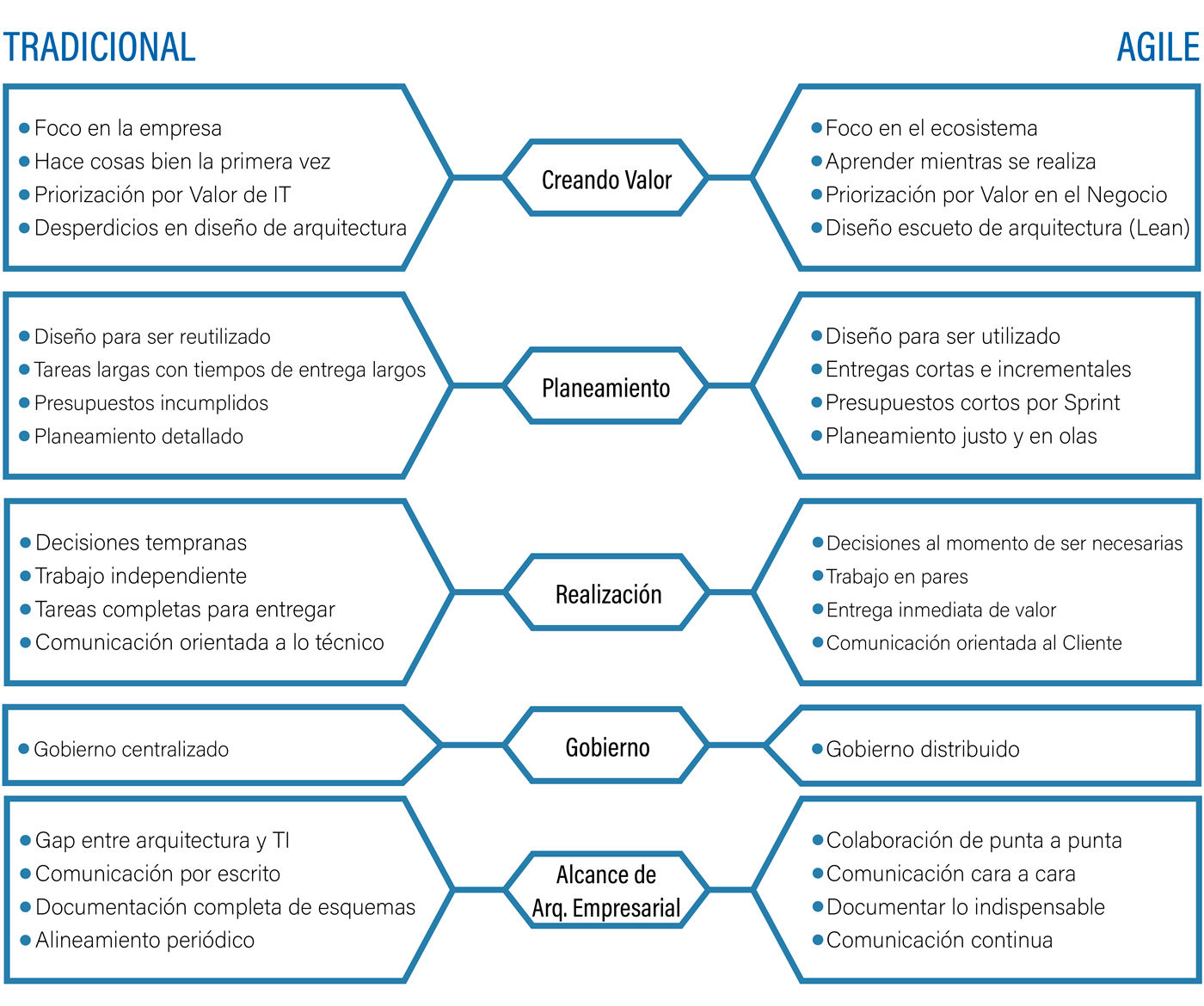Business Architecture in times of Agility
Share
Business Architecture in times of Agility
Share

By: Carlos Sutton
The Enterprise Architecture (AE) is the key piece to align the business strategy with the IT systems.
Thanks to EA, the business has a complete vision of the processes that comprise it, the technological services that are used and the characteristics and infrastructure necessary for them to function properly.
In these times of digital transformation, Enterprise architecture and agility are more critical today than ever. And that is why it is essential to combine forces and approaches.
Agility is key due to the growing demand of companies to obtain benefits more quickly; and by the need to adapt and continually learn to be able to respond to the various prevailing drivers of change, as well as redirect initiatives with speed and security. Besides, Business Architecture focuses on the digital strategy of the business and the value that it aims to achieve. It provides a framework for enterprise change, a way to manage this complexity, and a method to manage permanent change and manage inherent risk.
Companies need both approaches to complement each other in a pragmatic way and that is why organizations such as the Open Group, -authors of the TOGAF standard- currently include, as a central topic in their work groups, the concept of Agile Architecture generating a series of guidelines to complement both practices.
These guidelines are applied at three different times in the development and use of Enterprise Architecture:
- In the definition of Enterprise Architecture.
- When architects integrate and interact with Solution Development teams.
- When architects integrate and interact with Business teams.
In future installments we will delve into the agility guidelines for Enterprise Architecture and the considerations to take into account in its application.
Next, we anticipate a list of the guidelines and the transformation in the approach and ways of working when evolving from Traditional Architectures to Agile Architectures, covering different dimensions of analysis:

This paradigm shift from a Traditional Business Architecture to a Agile Enterprise Architecture In addition to the aforementioned guidelines, it implies a profound change of "mind set", and it is in this cultural change where the success of the transformation lies.
Despite “time-to-market” y “time-to-value” They are not new concepts, the cycles to achieve results are becoming shorter and the need to realize the value of IT Architectures and Solutions accelerates changes in mentality and the adoption of these new practices. The market and the external context are main factors in the acceleration of these changes.
For this reason, a critical need arises to adapt and adopt the agile philosophy and its practices, to the requirement of being able to scale Agility using proven frameworks such as TOGAF o IT4IT.
This reconciliation will allow us to obtain the best of both worlds: the speed and rapid response of “bottom up” incremental development, aligned with the strategic vision, purpose and results of the Company.
In Together Business Consulting, a member of the Open Group, we have the experience, knowledge and vocation to accompany you on this path of Transformation.
